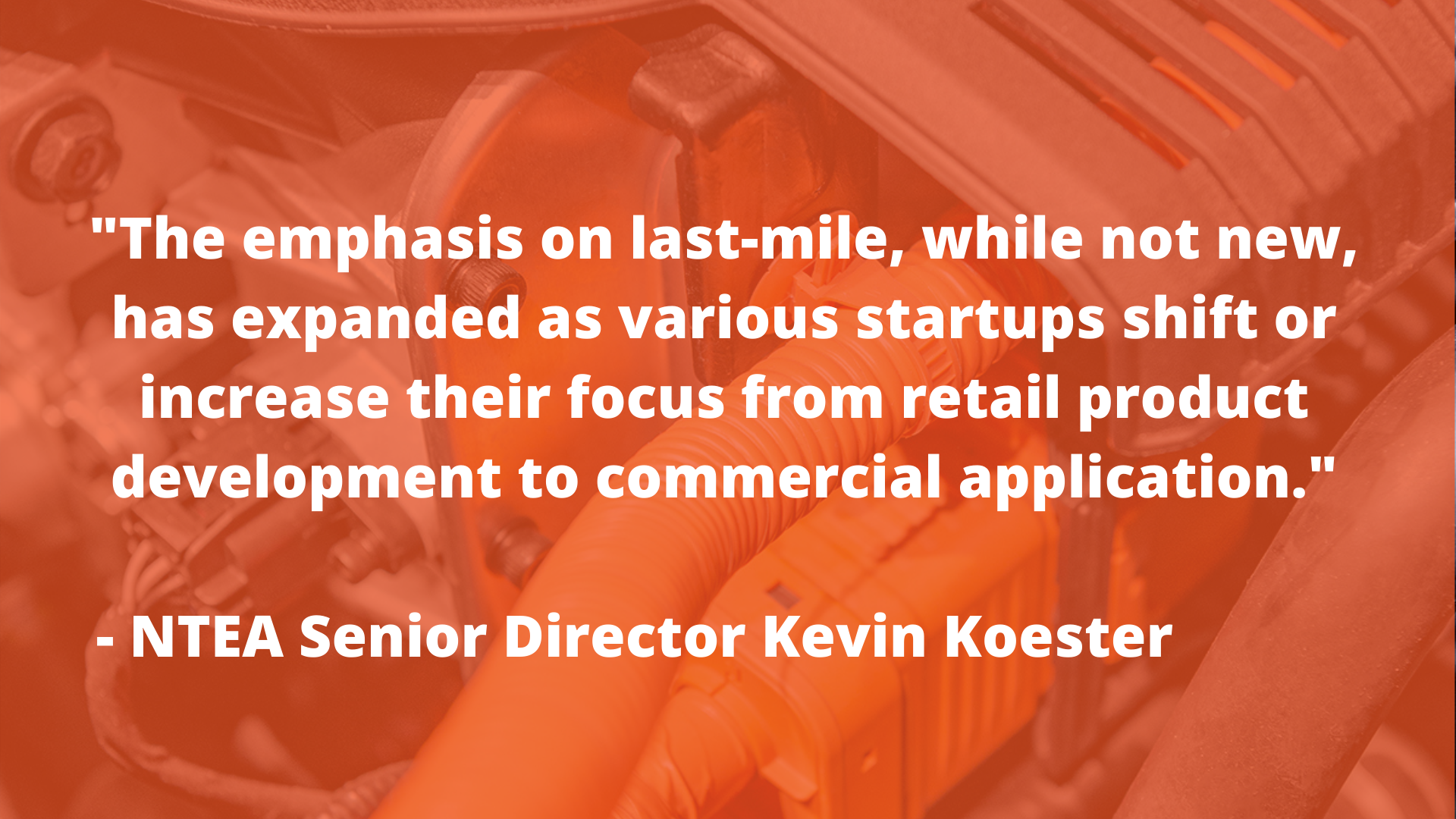
By Kevin Koester, NTEA Senior Director
This article was published in the July 2021 edition of NTEA News.
Electric vehicles. There, now I have your attention. Automotive headlines today are dominated by news of IPOs, SPACs, pre-orders, and deposits for the growing array of last-mile electric vehicles approaching production in the coming years. The emphasis on last-mile, while not new, has expanded as various startups shift or increase their focus from retail product development to commercial application. This shift is understandable as commercial fleets have the potential to make or break electric startup launch targets due to bulk order volume potential.
While recently attention has been on the last-mile space and fleets with dominant volumes, more EV startups are investigating the commercial market beyond last-mile delivery — the electric work vehicle. While this area can offer significant opportunity, the challenges in producing vehicles that undergo second-stage manufacturing will be distinct for electric vehicles, and not limited to startups.
Whether a pickup, cargo van or incomplete chassis, second-stage manufacturers make a vehicle buyable, even though they may not be the buyer. Fleets plan purchases not just on the chassis, but also on equipment needed to accomplish a vehicle’s drive and duty cycle goals. In many cases, upfit cost can far exceed chassis price. This means, in some cases, fleets may make chassis decisions based on ability to mount desired equipment. The best electric chassis in the world is a costly paperweight to fleets that can’t utilize their equipment.
Application of new technologies, in any case, can be challenging. There’s a reason why so much emphasis is placed on user experience during technology development. For the electric commercial vehicle, this focus is two-fold. Educating fleets on proper technology utilization and application is understood and expected. But there is also a need to inform and guide second-stage manufacturers to ensure vehicles landing on their doorstep are suitable for mounting equipment.
Communication between OEMs and manufacturers is vital not just for startups, but for any new product or even model year change. A manufacturer’s or distributor’s ability to receive a chassis, configure and upfit, and reenter freight, or achieve final delivery to a fleet, can have a substantial impact on order to delivery. Mounting equipment is not a simple task, and understanding changes to wiring outputs, HVAC configurations, no-drill zones, and how to tap into power sources can be the difference between a fleet receiving its completed chassis in July or October.
NTEA’s Truck Product Conference, scheduled Sept. 21–22, 2021, in Sandusky, Ohio, is an excellent starting point to foster this level of communication. This event provides opportunities for conversations with the second-stage manufacturing community — not just a simple, informational transaction. For instance, it’s about more than attending presentations and measuring chassis — it enables industry professionals to provide feedback to the engineering and product development community that attends. The level of discourse, planning, and relationship-building required to put a commercial vehicle on the road is significant, and factoring in electrification advancements in tractive and non-tractive applications creates an increased demand for this exchange. It’s a process that leads to the best solution for the fleet.
As more startups recognize the importance of the commercial market, and traditional OEMs adjust established platforms to meet growing demands for advanced powertrains, winners of the commercial EV boom may be companies focused on offering the best guidance to the partners making their products buyable.
Find more commercial EV resources at ntea.com/electrification.